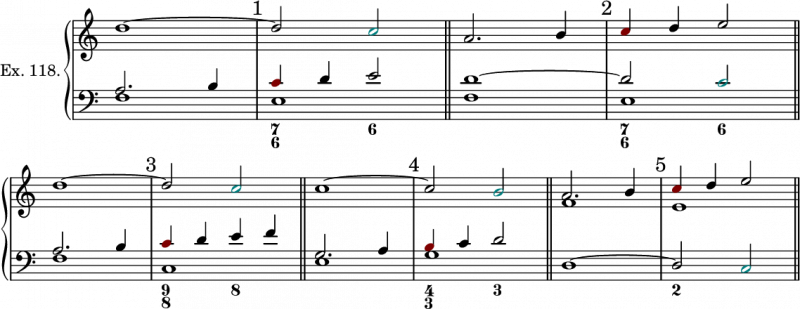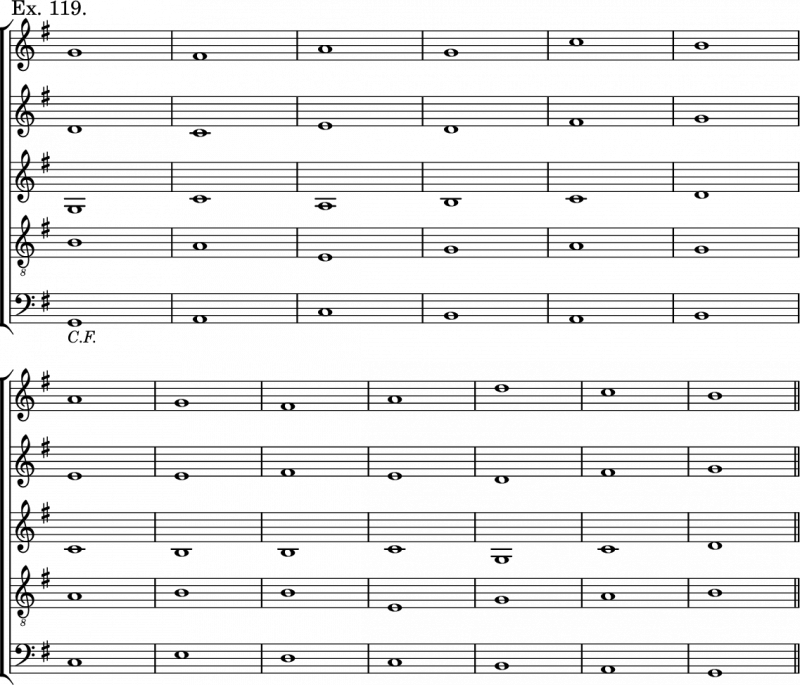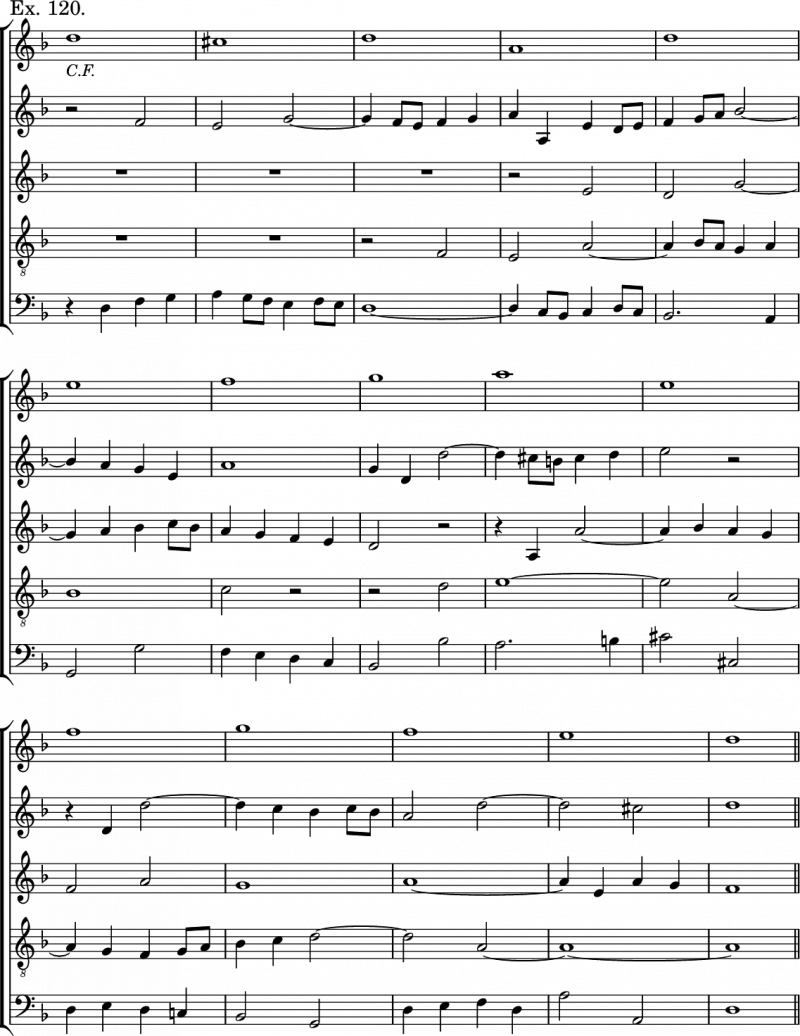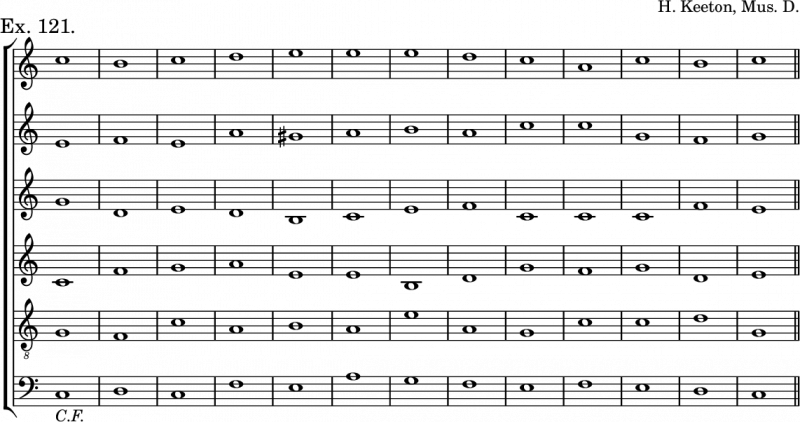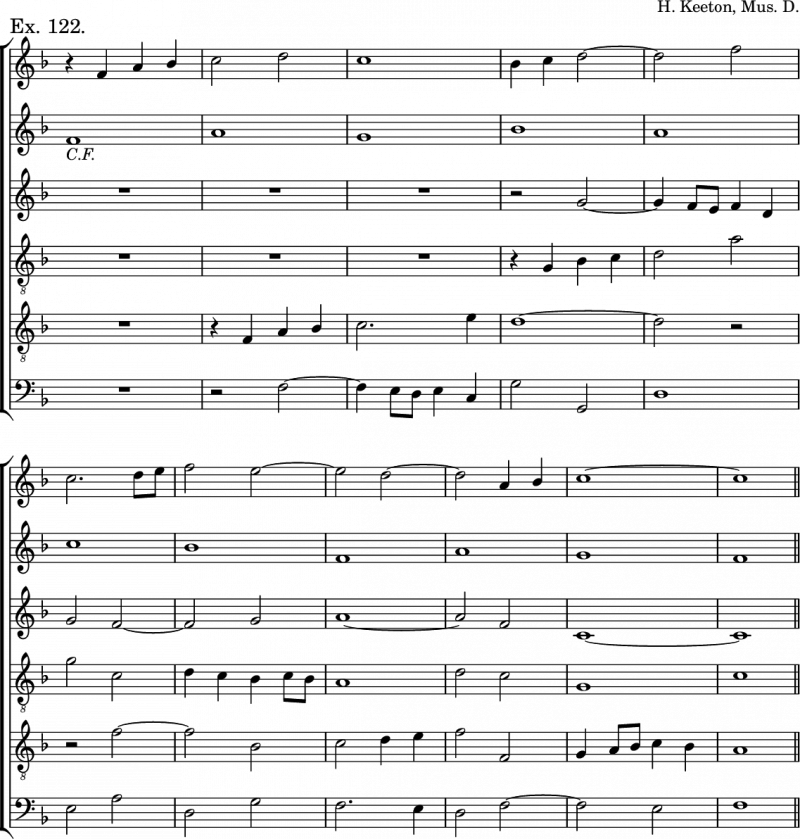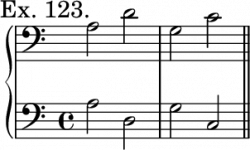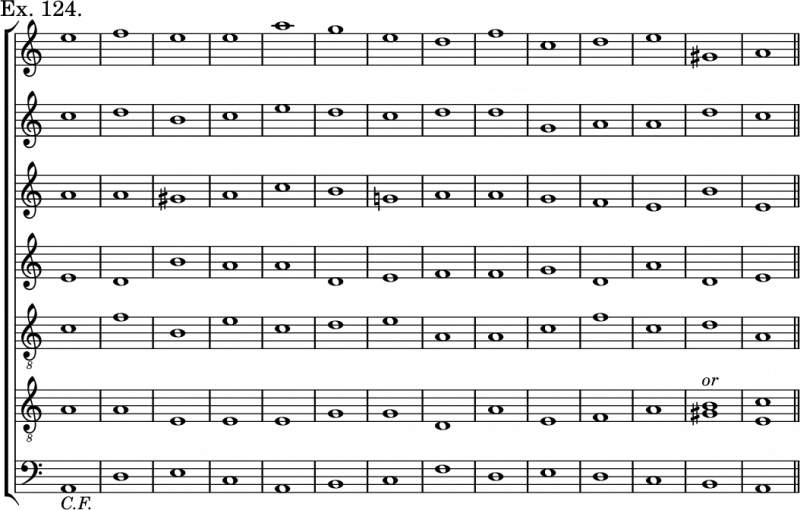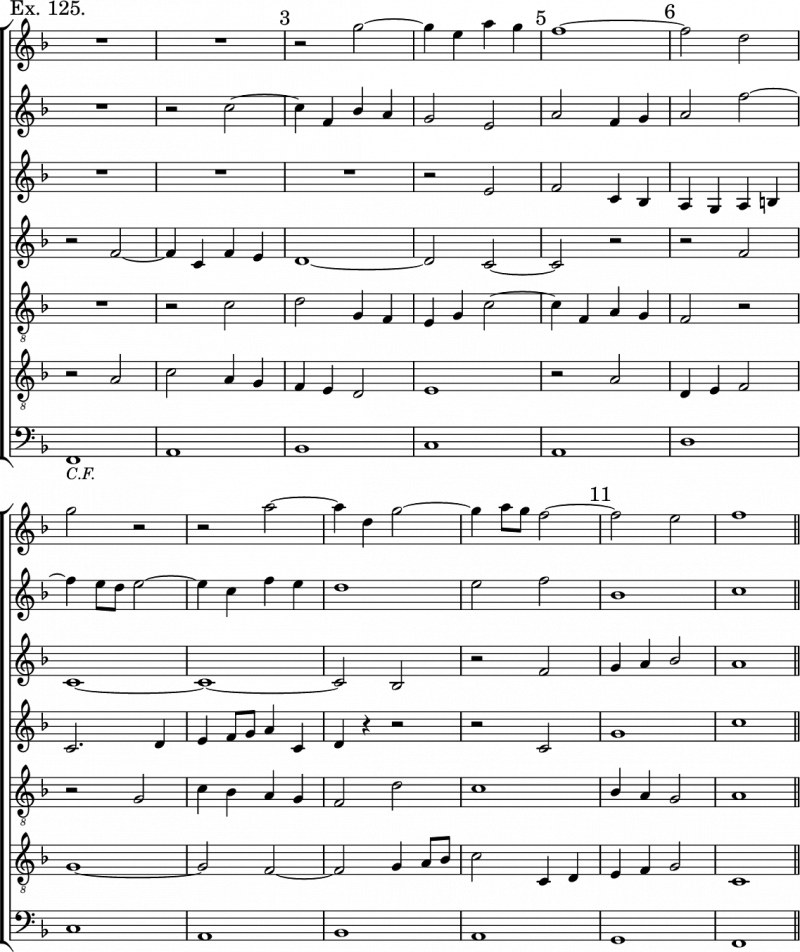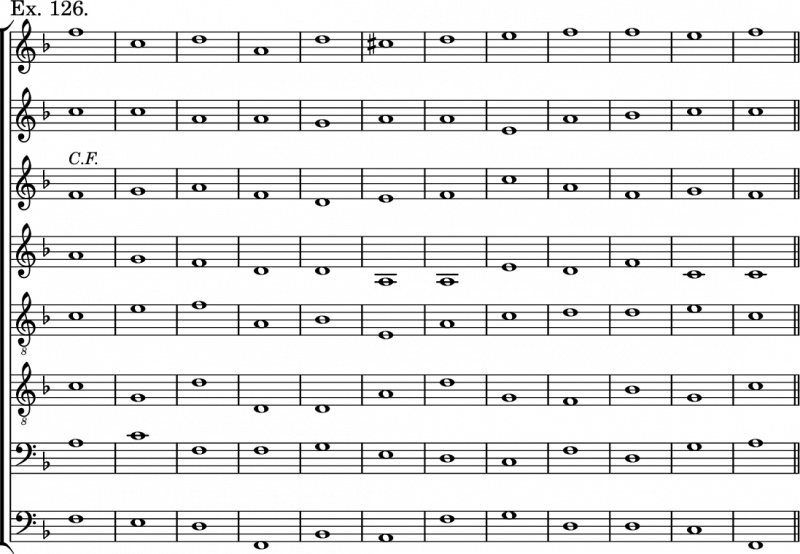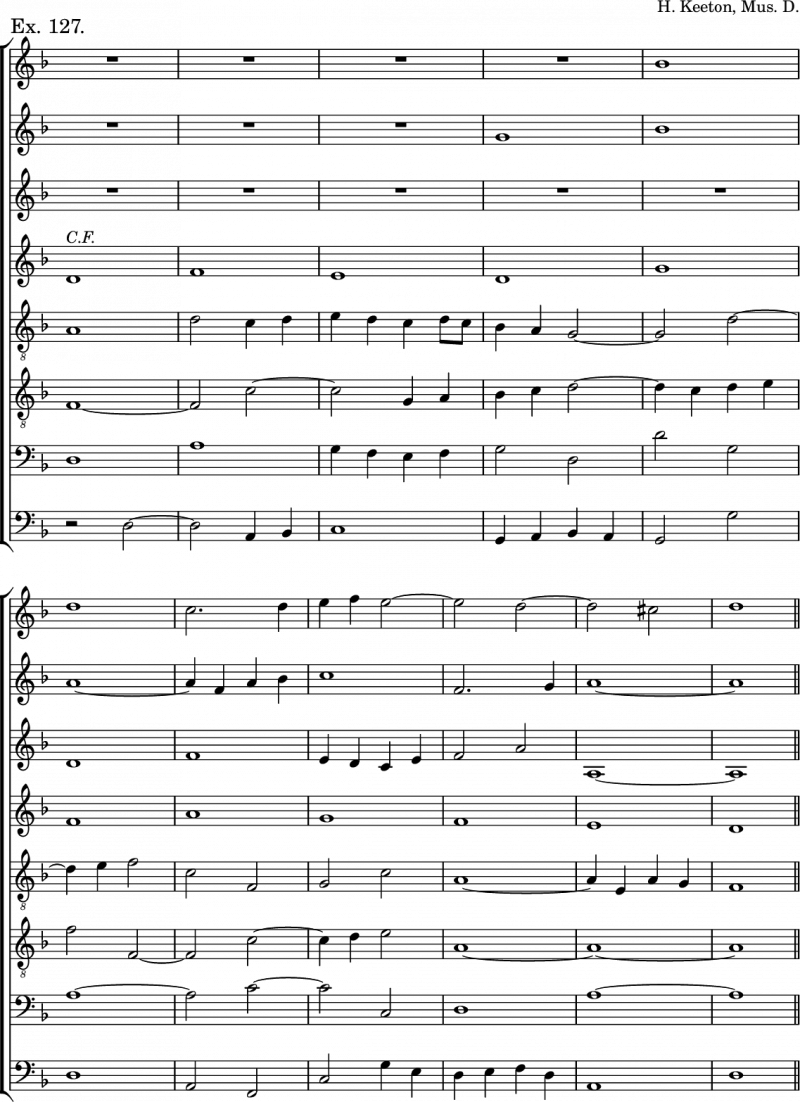Counterpoint (Bridge): Chapter 14
Counterpoint In Five Or More Parts
General Rules
Counterpoint may, of course, be written in five or more parts. The rules already given, and a consideration of the following examples, will sufficiently guide the student. He must remember that greater freedom is allowed as the parts increase in number; thus, consecutive 1) fifths and octaves by contrary motion may be used, and even (though rarely) consecutive fifths by similar motion if the second of the two be diminished 2). Such progressions as these, however, should not occur between the extreme parts, and will seldom be necessary in counterpoint of less than seven or eight parts.
The objectionable effect caused by the sounding of a note or its octave, on which a dissonance (in another part) is about to resolve, is not of course so apparent in seven or eight parts. This combination, so far as the octave is concerned, may be used in such cases as the following (Ex. 118).
Note: In the following example, the notes of the resolution are shaded in green, while the notes dissonantly sounding the resolution prior to the resolution occurring are shaded in red.
The combinations in Ex. 118 should not be used in less than seven or eight parts, and the anticipation of the resolution should be by conjunct movement, and generally of the character of a passing note.
In most of the following specimens of florid counterpoint, some of the parts commence with a point of imitation. The student will find that this adds greatly to the interest of the examples.
Five-Part. Note Against Note.
Five-Part. Florid.
Six-Part. Note Against Note.
Six-Part. Florid.
Seven-Part. Note Against Note.
When seven or eight parts are written, the two lowest parts often proceed from the unison to the octave (or vice versa) as in Ex. 123. This progression is especially useful in the basses of eight-part counterpoint for a double choir (see Ex. 128).
Seven-Part. Florid.
In Ex. 125, at bars 3 and 6, and other places, the student will observe an unsyncopated minim 3) at the end of the bar, contrary to what was said below Ex. 55 in Chapter 5 4). Although it is well to observe this rule as strictly as possible, it is difficult to avoid occasional instances such as these in the inner parts of seven or eight-part counterpoint; the extreme parts should, however, conform to the rule.
When a part re-enters after a rest, it is sometimes possible, and generally advisable, to introduce it on a point of imitation. This is done to a certain extent in bars 5, 6, and 7 of the previous example, by the second tenor, second alto, and first tenor, in the latter case by inversion.
Bar 11 contains a sixth (in the second tenor) against a suspended seventh (see Ex. 118).
